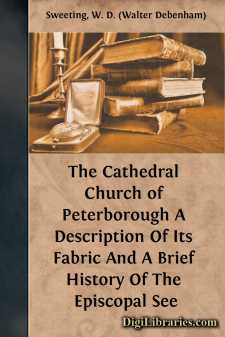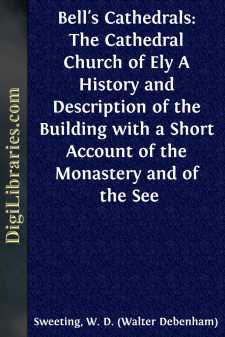Categories
- Antiques & Collectibles 13
- Architecture 36
- Art 48
- Bibles 22
- Biography & Autobiography 813
- Body, Mind & Spirit 142
- Business & Economics 28
- Children's Books 15
- Children's Fiction 12
- Computers 4
- Cooking 94
- Crafts & Hobbies 4
- Drama 346
- Education 46
- Family & Relationships 57
- Fiction 11828
- Games 19
- Gardening 17
- Health & Fitness 34
- History 1377
- House & Home 1
- Humor 147
- Juvenile Fiction 1873
- Juvenile Nonfiction 202
- Language Arts & Disciplines 88
- Law 16
- Literary Collections 686
- Literary Criticism 179
- Mathematics 13
- Medical 41
- Music 40
- Nature 179
- Non-Classifiable 1768
- Performing Arts 7
- Periodicals 1453
- Philosophy 64
- Photography 2
- Poetry 896
- Political Science 203
- Psychology 42
- Reference 154
- Religion 513
- Science 126
- Self-Help 84
- Social Science 81
- Sports & Recreation 34
- Study Aids 3
- Technology & Engineering 59
- Transportation 23
- Travel 463
- True Crime 29
W. D. (Walter Debenham) Sweeting
Walter Debenham Sweeting (1839–1913) was a British author, antiquarian, and clergyman known for his writings on English ecclesiastical architecture and local history. He served as a vicar in Peterborough and wrote extensively about the city's cathedral. His notable works include "Peterborough Cathedral: A General, Architectural, and Monastic History" and "The Cathedral Church of Ely." Sweeting's writings are valued for their detailed descriptions and historical insights into English religious architecture.
Author's Books:
Sort by:
CHAPTER I.HISTORY OF THE CATHEDRAL CHURCH OF S. PETER. Until the middle of the nineteenth century, Peterborough remained one of the most unchanged examples in the kingdom of the monastic borough. The place was called into existence by the monastery and was entirely dependent on it. The Abbot was supreme lord, and had his own gaol. He possessed great power over the whole hundred. And even after the See...
more...
CHAPTER I. THE HISTORY OF THE BUILDING. No mention has been found of Ely as a town before the time of the virgin queen S. Etheldreda. The district known as the Isle of Ely—which now includes the whole of the northern part of Cambridgeshire above the River Ouse, together with a few parishes east of that river that are in the county—is spoken of at the time of the marriage of the princess as if it...
more...



